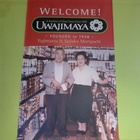When Japan opened its doors to the world during the Meiji period, a flood of Japanese people began to travel overseas. People went to various countries, including the United States, Canada, Brazil, Mexico, Peru, Australia, and Southeast Asia, to study, to make a living, or in the hope of making a fortune.
Looking at travels to America and Hawaii, there are famous examples of people who ended up living in America by chance after being shipwrecked at sea towards the end of the Edo period, such as John Manjiro and Joseph Hikozo. In 1868 (the first year of the Meiji era), a group of 153 people emigrated to Hawaii to work on sugar cane plantations. In the world of immigration history, these people are known as "gannenmono."
They left Japan during the chaotic period of the Meiji Restoration without waiting for permission from the Meiji government, but there were also people who took advantage of the chaos and emigrated to the American mainland in an unusual way. In 1869, after the Boshin War, a Prussian who had served as a military advisor to the defeated Aizu clan, brought a dozen or so members of the clan with him and settled deep inside Sacramento, California.
By the way, immigration to Hawaii was done as "government contract immigration" under an agreement between the Hawaiian government, which needed labor, and Japan. After that, private companies that mediated immigration to America and Hawaii became involved, and the form of contract immigration was adopted. However, this was criticized by the US side as having humanitarian issues, and was officially abolished.
Amid the immigration boom
Instead, individuals immigrated through immigration agents (companies, etc.). Most of the people who traveled were migrants for the purpose of working, and this was the reality of what was called "immigration." In Hawaii, the number of immigrants was about 230,000 between the time of the opening of the country and 1930 (Taisho 19), and in the United States it was over 107,000.
Those who made it to America worked in agriculture, fishing, forestry, railroads, mining, and also in stores and hotels opened by compatriots who had immigrated earlier. Stories of immigrants who paid off debts that would have taken a lifetime to repay in Japan in just a few years by working in America, or who built American-style homes after returning home, spread in their hometowns, and many thought, "I'll be next," and traveled to America relying on relatives and acquaintances.
Publications also fueled this enthusiasm for immigration. Books and magazines that provided specific guidance on how to live in America were published, and discourse preaching the benefits and significance of emigrating overseas became widespread, creating a kind of immigration boom.
There are many immigrants from western Japan.
This trend has taken place all over the country, but there are considerable differences depending on the region. Looking at the total number of people emigrating overseas by prefecture, the overwhelming majority are from Western Japan, with Hiroshima, Okinawa, Kumamoto, Fukuoka, and Yamaguchi standing out. Other prefectures with large numbers include Fukushima, Hokkaido, and Niigata.
Ehime Prefecture, the hometown of Fujimatsu Moriguchi, who founded Uwajimaya, was not a prefecture that sent out many immigrants. However, when looking at the prefecture by region, Nishiuwa District, where Fujimatsu was from at the time, seems to have had a much higher immigration rate than other areas in the prefecture.
It is known that in the past, people from Nishiuwa County would board a small boat called an Utase-bune and cross the Pacific Ocean with their companions to enter the United States, a form of "stowaway" that was akin to a great adventure. Most of Nishiuwa County is now part of Yawatahama City, and a model of this Utase-bune is on display in the city hall to commemorate this history.
Some interesting data is presented in "The Village Where the Winds of America Blown: The Story of the Utase-bune" (Ehime Prefectural Cultural Promotion Foundation, 1987), written by Murakawa Yoko, a professor at Keiai University who has been researching the history of immigration in this region for a long time, focusing on the fact that people crossed the sea on Utase-bune boats.
According to the "Number of Overseas Travelers by City" in Ehime Prefecture in 1904 (Meiji 37), which was compiled based on the "Ehime Prefecture Statistical Book," the population of the prefecture at that time was a total of 1,032,096 people in Matsuyama City and 12 counties. Looking at this by city and county, the largest numbers were in Ochi County (present-day Imabari City and others) with 150,704 people, Onsen County (present-day part of Matsuyama City) with 145,615 people, and Kitauwa County (present-day most of Uwajima City) with 121,767 people.
In comparison, Nishiuwa District has a population of 92,235. However, the number of overseas tourists in Nishiuwa District is 478, compared to 134 in Ochi District, 119 in Onsen District, and 71 in Kitauwa District. Looking at the number of overseas tourists per 10,000 people, Nishiuwa District has far more visitors than the second-place Higashiuwa District, with 15.7, at about 51.8.
It is easy to imagine that Fujimatsu Moriguchi's hometown was a place where people were very keen to travel abroad and emigrate since the Meiji period. In the next issue, we will take a closer look at what that was really like.
(Titles omitted)
© 2018 Ryusuke Kawai







